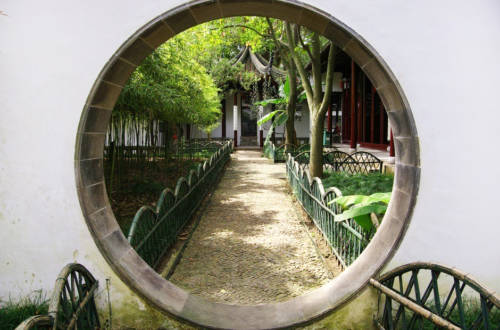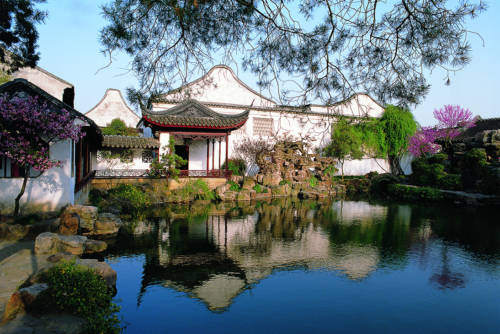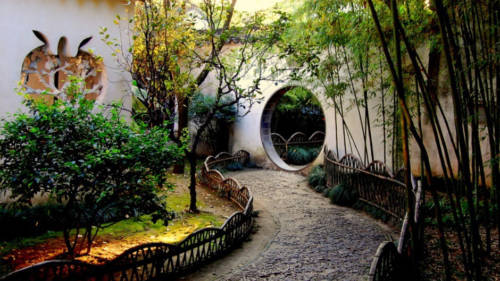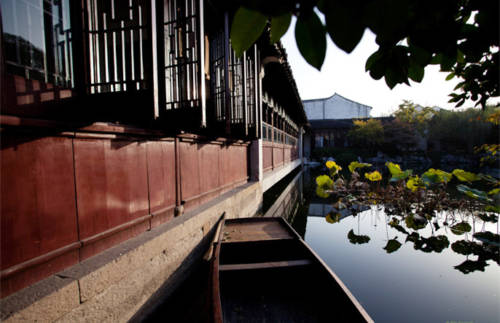
When It Comes To Chinese Gardens, There’s Nothing Like Suzhou
When people in China think about gardens, they often think about Suzhou, a city famous for exquisite classical Chinese gardens. Nine of its gardens are treasures protected on UNESCO’s World Heritage list, dating from the 11th to 19th centuries, and often built by scholars or government officials. Formerly called “Soochow”, the 2,500-year-old city, famed for its high culture, silk-making, and traditional arts like silk embroidery, honored in the Chinese proverb, “Heaven above, Suzhou and Hangzhou below,” is a mere half-hour from bustling Shanghai by bullet train.
Each of the notable gardens in Suzhou is different, and their looks change with four distinct seasons. You may see peonies, azaleas, camellias and cherry blossoms in spring, lotus in summer, chrysanthemums and vivid maple foliage in autumn, and plum in winter.
Crucial to the aesthetic is that different scenes should unfold gradually, so visitors don’t see the whole garden in one glance.
Contemplation of nature is of prime importance in traditional Chinese culture, which is part of Suzhou’s peaceful allure. A classical Chinese garden is designed to replicate nature in miniature, so its major elements always include ponds (representing lakes and rivers), rocks (for mountains), plants (bright colors, wherein lovely scent and style are prized) and buildings with graceful upturned eaves. Crucial to the aesthetic is that different scenes should unfold gradually, so visitors don’t see the whole garden in one glance. So, artistic devices like “view framing” are used to showcase beautiful panoramas, like moon gates or round windows. Below, GC explores Suzhou’s nine UNESCO gardens.
Humble Administrator’s Garden
The biggest garden in Suzhou, built in 1509, is one-third water, with ponds and winding streams (including the lotus pond next to Hall of Distant Fragrance), three islands, and dense bamboo and pine forests. A tea house and an Embroidery Pavilion displaying colorful flower and landscape “paintings” woven by a master artisan can also be found in the Humble Administrator’s Garden, which is often a first visit for nature tourists visiting the area. A lacquer screen depicts a map of the garden at the entrance. Armani launched a perfume named for China’s beloved peonies, Poivine Suzhou, here in 2015.
Garden to Linger In
A carved landscape of 2,500 pieces of jade greets visitors at the entrance of the Lingering Garden, which was built in 1593. The Lingering Garden is known for its magnificent halls and Cloud-Capped Peak, a 20-foot-high, five-ton artificial hill. Its osmanthus and magnolia trees symbolize prosperity, since they bloom with gold and silver-white flowers, respectively; maple trees blaze scarlet in autumn. A flower-arranging class can be reserved for groups in advance. Pingtan, a local singing-storytelling style on a stringed instrument, can be heard here.
Master of the Nets Garden
Good things often come in small packages, and Suzhou’s smallest garden is proof. The Master of the Nets Garden has a design inspired by the Metropolitan Museum of Art’s Astor Court, and its pavilions and views of flowers and ponds are exquisite enough to match, creating the illusion of much more space. Furnishings reflect 12th-century Song Dynasty style, when the garden was built. A later 18th century owner changed its name, remarking in exasperation that he’d rather be a fisherman than a government bureaucrat. Night performances of Chinese Opera, with performers in ornate costumes and elaborate makeup, are a can’t-miss.
Lion Forest
Built in the 14th century, the Lion Forest Garden has China’s biggest group of artificial hills made from oddly-shaped rocks from nearby Taihu Lake, as well as a rock maze over 20 feet high with many openings, an artificial waterfall and secluded caves. Located on architect I.M. Pei’s ancestral family estate next to Suzhou Museum, it’s an art museum designed as Pei’s stylized twist on a Chinese garden, with a streamlined pavilion and water features.
Canglang Pavilion
The oldest garden in Suzhou, built in the 11th century, has so much bamboo and other greenery that you feel you’re walking in a mountain forest. A corridor linking scenic spots at Canglang Pavilion features 108 intricately-designed lattice windows framing views of the green pond and hills. Fragrance Hall is filled with the scent of osmanthus in autumn. Adorned with Ming Dynasty furniture, Mingdao Hall is where scholars once studied. Stone statues of 594 ancient sages of Suzhou adorn another hall.
Couple’s Retreat
Surrounded by peaceful canals on three sides, Couple’s Retreat features a mansion and smaller houses in its center, with a garden on each side. Pingtan performances are offered year-round in this two-acre garden, which was built in the 19th century on the site of a ruined 17th century garden. Pavilions bear names like “Wisteria Boat House” and “Moon Admiring Pavilion”.
Mountain Villa of Embracing Beauty
This garden is located in the courtyard of the Embroidery Museum, a delightful place to watch artisans do silk embroidery and see masterworks of the genre dating back 2,000 years. Most structures face its artificial hill of lake rocks, composed of peaks, cliffs, stone houses and steps, which re-create five important mountains in China.
Garden of Cultivation (Yipu Garden)
Built in the 16th century, the Garden of Cultivation has a pond offering views of mist-cloaked hills on its south side, and buildings on its north side. Suzhou’s biggest waterside pavilion, the Water Pavilion of Longevity, is nestled in the midst of Yipu’s splendor. A moon gate in the wall leads to a small courtyard.
Retreat & Reflection Garden (Tuisi Garden)
Located in Tongli, a quaint 1,000-year-old “water town” of canals and 47 stone bridges on the banks of Taihu Lake, near Suzhou, offers a charming backdrop to the Tuisi Garden– a place of retreat and reflection. The Tuisi Garden is less crowded than those in Suzhou itself, and its 24 buildings appear to float on water– as if the garden itself weren’t magical enough.





































